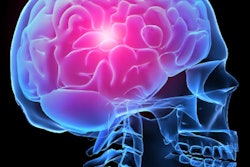
Dentists are writing fewer opioid prescriptions than other practitioners, but prescribing patterns differ by a patient's race, ethnicity, and sex, as well as by provider type. That's according to a new study of Medicaid recipients published in the April issue of the Journal of the American Dental Association.
The researchers examined Medicaid claims for oral health-related conditions in 13 U.S. states and found that 23% of patients received an opioid within 14 days of diagnosis. However, patients who were female, non-Hispanic white, or African-American were more likely to receive opioids, as were those receiving care in an emergency department or from a nurse practitioner.
"Dentists were providing substantially fewer opioid prescriptions than were their medical colleagues for pain treatment after dental diagnosis in the Medicaid population we examined," the authors wrote (JADA, April 2018, Vol. 149:4, pp. 246-255). "When considering pain management for oral health-related conditions, dentists should continue to implement conservative prescribing practices as recommended."
The lead study author was Chandrashekar Janakiram, PhD, MDS, a postdoctoral fellow at the National Library of Medicine and National Institute of Dental and Craniofacial Research in Bethesda, MD.
Prescribing patterns vary
Dentists provide an estimated 12% of annual opioid prescriptions, the second lowest proportion among nononcology-related healthcare providers, according to previous research. Nevertheless, a previous study found that unused opioids prescribed by dentists are thought to be responsible for 1,500 deaths annually.
Acute dental pain is often managed by healthcare providers in emergency departments. However, little information is available on opioid prescribing practices in this setting, and no information exists on the assessment of patient sex, race or ethnicity, or healthcare provider differences for opioid prescribing for dental diagnoses among low-income patients.
The researchers conducted the current study to investigate differences in the filling of opioid prescriptions for dental diagnoses based on demographic variables among children and adults enrolled in Medicaid, as well as to determine whether healthcare provider type or diagnosis influenced any differences.
They used medical and pharmacy Medicaid claims data from January 2013 through September 2015 from a 13-state database. The investigators also searched for outpatient pharmacy claims for the opioids.
They generated records for patients who sought outpatient oral health-related care. Using prescription claims records, the researchers then developed a second cohort who had received an opioid analgesic within 14 days of the primary dental diagnosis and matched the two sets of records.
They identified almost 900,000 people with a primary diagnosis of an oral health-related condition during the relevant time period. Among them, more than 209,200 people (23.4%) filled an opioid prescription within 14 days of this diagnosis.
The researchers found that female patients were 50% more likely than male patients to receive an opioid for managing a dental condition. Non-Hispanic white and African-American patients were about twice as likely as Hispanic patients to receive opioids, and opioid use was substantially higher among African-American and non-Hispanic white female patients than among Hispanic female patients.
| Medicaid patients receiving opioids within 14 days of a dental diagnosis | ||||
| Non-Hispanic white | African-American | Hispanic | Other | |
| Patients with dental diagnosis (% of total) | 480,208 (53.9%) | 218,453 (24.5%) | 76,809 (8.6%) | 116,250 (13.0%) |
| Patients with opioid prescription (% of total) | 120,903 (57.8%) | 54,205 (25.8%) | 7,486 (3.6%) | 26,882 (12.8%) |
| Percentage with prescription within category | 25.2% | 24.7% | 9.7% | 23.1% |
Fewer than 1% of adults ages 65 and older received an opioid after a dental diagnosis, compared with 48.4% of those ages 30 to 39 years.
Medicaid beneficiaries receiving oral healthcare in an emergency department had nearly five times the chance of receiving an opioid prescription as those seen in a dental office. Patients were nearly three times as likely to receive an opioid prescription from a nurse than from a dentist.
| Provider seen by Medicaid patients receiving opioids for a dental diagnosis | ||||||
| Emergency department | Dentist | Medical specialist | Nurse practitioner | Other | Unknown | |
| Patients with dental diagnosis (% of total) | 200,863 (22.5%) | 209,469 (23.5%) | 217,370 (24.4%) | 43,910 (4.9%) | 114,755 (12.9%) | 105,353 (11.8%) |
| Patients with opioid prescription (% of total) | 77,043 (36.8%) | 22,612 (10.8% | 44,013 (21.1%) | 11,495 (5.5%) | 19,540 (9.3%) | 34,593 (16.5%) |
| Percentage with prescription within category | 38.4% | 10.8% | 20.2% | 26.2% | 17.0% | 32.8% |
African-American and non-Hispanic white Medicaid patients were more likely to receive an opioid for a dental diagnosis at an emergency department than were Hispanic patients. African-American patients were 50% more likely to receive an opioid when diagnosed with a dental condition by a dentist than were non-Hispanic white patients and were nearly three times as likely as Hispanic patients.
The ratios of opioid prescriptions by patient sex or by race or ethnicity did not differ between dentists and emergency departments, although emergency department healthcare providers were less likely to prescribe opioids for diseases of the hard tissue, teeth, and jaw and more likely for pulp and periapical conditions than were dentists.
The study's data are consistent with other research that has found that women were more likely than men to receive an opioid for dental pain management from an emergency department or for any diagnosis.
"Our findings reiterate racial and sex disparities in prescription provision that are echoed in medical diagnosis," the authors wrote.
These differences have been attributed to factors that include healthcare providers' unconscious biases and cultural differences between healthcare providers and patients.
"It appears that pain management for dental conditions is not consistent across various healthcare providers for some patient groups and that these treatment differences may be an indication of the many complexities involved in pain perception, manifestation, diagnosis, and treatment," the authors wrote.
What we don't know
The study findings, however, are not generalizable to the overall U.S. population because they were derived from a Medicaid cohort, according to the authors. Additionally, the database used does not contain patient-level pharmacy drug dosage data, so quantifying the amount of opioids prescribed per patient was not possible. The results were also limited because many healthcare provider sources were unknown.
Conducting future research on the education of practitioners on pain management would be useful, the authors noted.
"One area that can benefit from additional research is the evaluation of predoctoral educational curriculum and professional continuing educational efforts that focus on improving pain management while reducing disparities in receipt of pain medications (for example, opioids) among underserved groups," they concluded.



















